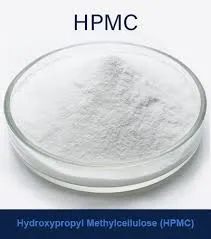
Dec . 13, 2024 20:23 Back to list
hpmc viscosity
Understanding HPMC Viscosity Properties and Applications
Hydroxypropyl Methylcellulose (HPMC) is a widely utilized polymer in various industries due to its unique physical and chemical properties. Among its most significant characteristics is its viscosity, which plays a crucial role in determining the performance of HPMC in different applications, from pharmaceuticals to construction materials.
HPMC is a cellulose derivative that is modified to enhance its solubility and functionality. The viscosity of HPMC is primarily influenced by its molecular weight, concentration, and the degree of substitution of hydroxypropyl and methyl groups. Typically, the higher the molecular weight, the greater the viscosity. This property is particularly vital in applications where thickening, binding, or stabilizing is required.
Understanding HPMC Viscosity Properties and Applications
Moreover, HPMC serves as a binder in tablet formulations. The viscosity of HPMC affects the flow and compaction properties of the powder blend, impacting tablet hardness and disintegration time. High viscosity HPMC can improve the binding efficiency, leading to tablets that maintain integrity during handling and storage but dissolve as intended upon ingestion.
hpmc viscosity

In the construction industry, HPMC is employed as an additive in cementitious materials. Its viscosity contributes to enhanced workability and prevents the segregation of components in mortars and plasters. Adjusting the viscosity can ensure that these materials retain their desired consistency during application, allowing for smoother finishes and improving overall structural integrity.
Food applications of HPMC are also noteworthy. It is utilized as a thickening agent, emulsifier, and stabilizer in various food products, including sauces, dressings, and baked goods. The viscosity of HPMC influences the texture and mouthfeel of food products, catering to consumer preferences and improving product quality. Its ability to form gels and retain moisture makes it invaluable in the formulation of gluten-free products and low-fat alternatives, providing desirable sensory attributes.
One of the unique features of HPMC is its ability to form a gel in hot water, which then returns to a viscous solution upon cooling—this behavior can be harnessed in various formulations where temperature stability is crucial. This temperature-dependent viscosity makes HPMC versatile and adaptable for numerous applications.
When working with HPMC, it is essential to consider not just viscosity but also the method of preparation and the conditions under which it will be used. A common measure of viscosity is the Brookfield viscometer, which provides insights into how the polymer will perform in real-world scenarios. Additionally, understanding the interplay between viscosity and shear rate can help formulators predict how their formulations will behave during processing and application.
In conclusion, HPMC viscosity is a critical parameter that influences its efficacy across diverse sectors. From pharmaceuticals to construction and food production, understanding and controlling this property allows for the development of superior products that meet consumer needs and regulatory standards. As industries continue to innovate and evolve, the role of HPMC and its viscosity will remain pivotal in shaping high-performance formulations.
-
Versatile Hpmc Uses in Different Industries
NewsJun.19,2025
-
Redispersible Powder's Role in Enhancing Durability of Construction Products
NewsJun.19,2025
-
Hydroxyethyl Cellulose Applications Driving Green Industrial Processes
NewsJun.19,2025
-
Exploring Different Redispersible Polymer Powder
NewsJun.19,2025
-
Choosing the Right Mortar Bonding Agent
NewsJun.19,2025
-
Applications and Significance of China Hpmc in Modern Industries
NewsJun.19,2025







